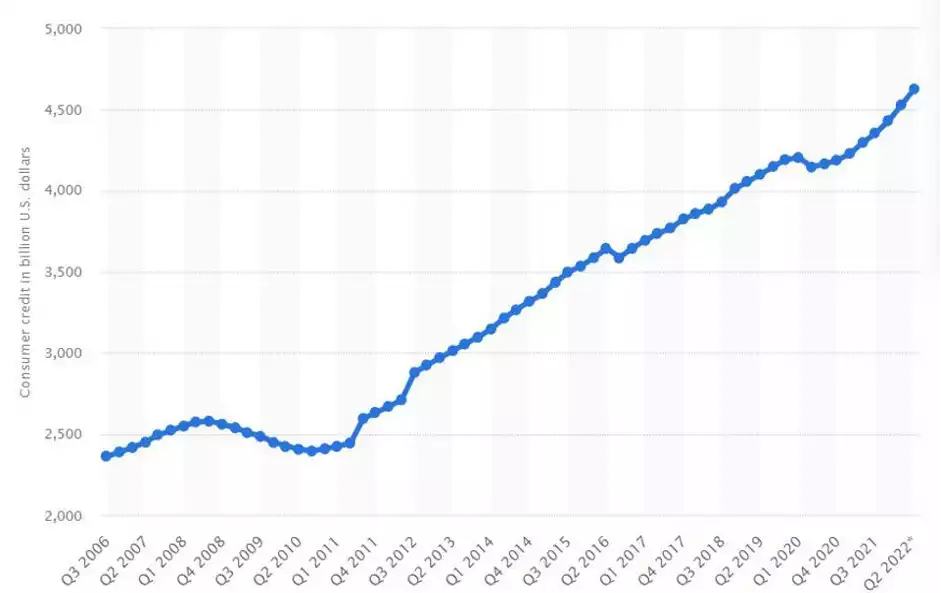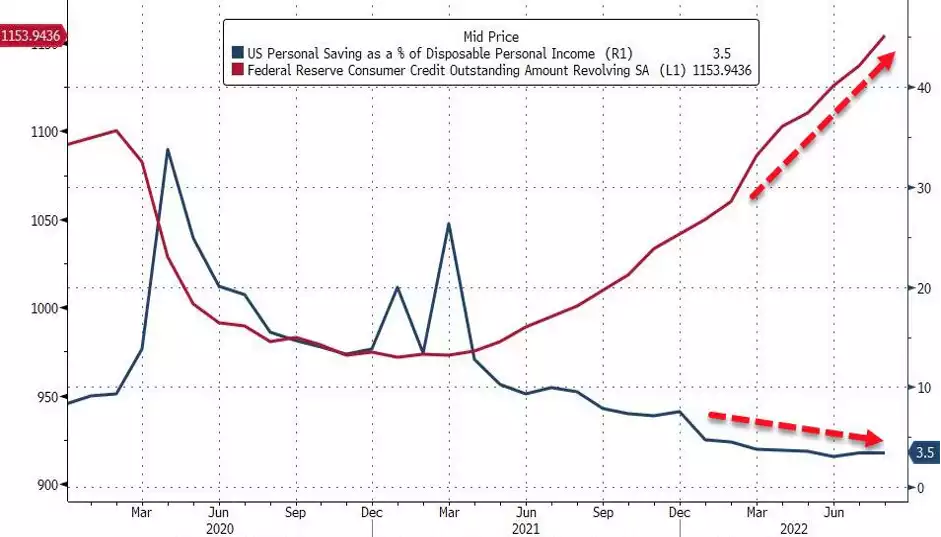American Credit Card Debt is Spiraling Out of Control – Stagflation Reigns
News
|
Posted 13/10/2022
|
7117
The latest consumer credit data released on Tuesday showed that revolving credit in August increased by an astounding 18.1% - A sign that households continue to struggle to fight the inflation gains that are exceeding their wages.
In yesterday’s news, we discussed how the “Economy is starting to go through the windshield,” which appears to align with the conclusions one can draw from the recent credit data released by the Federal reserve.
The increase of $32.2 billion in credit card debt this August greatly superseded the market’s projection of $24 billion. To put this into perspective, the average annual increase in 2019 was only 3.6%.
Consumer credit, which is made up of credit card debt, student loans and auto loans, now exceeds $4.6 trillion, with credit card debt alone accounting for $1.1 trillion. Both of which are unsurprisingly at all-time highs.

After the data came out, MarketWatch reported that “Some experts are alarmed at the pace of growth in consumer credit and think that households are using expensive debt to keep spending with inflation so elevated. “
Of course, these concerns are absolutely warranted, as a recent report by Lending Tree indicated that 20% of Americans have paid a bill late in the past 6 months because they didn’t have the money on hand to cover the cost.
Furthermore, 60% of credit card users have been in debt for more than a year, up from 50% a year ago according to a recent creditcards.com report.
Household savings rates have dramatically dropped as well, all the way down to 3.5%.

With credit card interest rates currently at a record rate of 18.45% (0.42% greater than last month), it is evident that the financial burden of many Americans greatly depends on the Federal Reserve’s interest rate decisions.
This large portion of households that are being forced to turn to revolving credit to pay bills will be disproportionately impacted by upcoming interest rate hikes, effectively making it more difficult to make interest and principal repayments over time. Hence to some degree, further rate rises will only increase the wealth disparity between the lower and upper class, creating further economic and social turmoil.
These are clear signs of the dreaded stagflation where the combination of high inflation but a weak economy see the likes of this double whammy where ordinary American have both high debt due to inflation outstripping wage growth and higher interest rates payable on that debt.
To the surprise of many, Fed chair Jerome Powell believes that “households are in very strong financial shape.”
Yes, he really said that.
Many will be hoping that Powell will soon lower the burden on households during the next FOMC meeting, though considering his most recent comments it seems increasingly unlikely. Tonight we see one of the most eagerly anticipated CPI inflation prints in a long while. Given the economic uncertainty, global instability and potential consumer credit crisis ahead, it is important to remember to balance your wealth in this unbalanced world.
************************************************************************************
GOT A QUESTION about today's news?
This afternoon, the Gold & Silver Standard Insights team will be breaking down the news and answering YOUR questions.
Submit your question to [email protected] and SUBSCRIBE to the YouTube Channel to be notified when the GSS Insights video is live.
**********************************************************************************